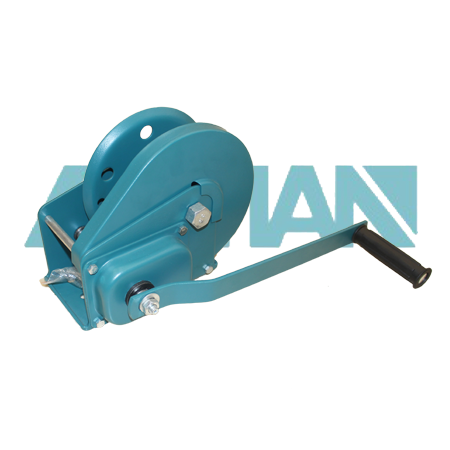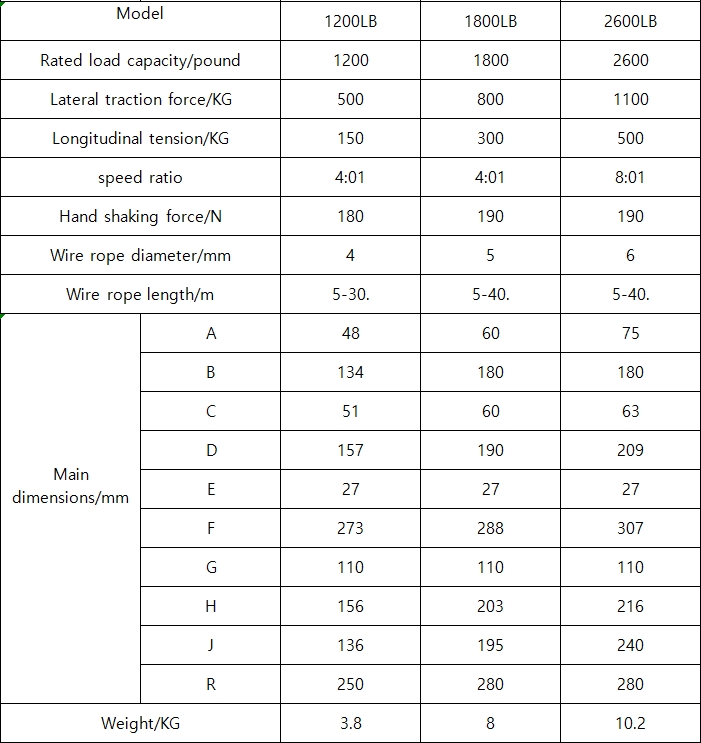 中文版
中文版



Welcome to contact us by phone:0086-0312-7969888
A manual worm winch is a type of winching device that utilizes a worm gear mechanism for lifting, pulling, or positioning loads. It operates manually, typically with a hand crank, and is designed to provide controlled and precise movement. The worm gear mechanism consists of a threaded screw (worm) that engages with a toothed wheel (gear), creating a mechanical advantage. This design allows for efficient force multiplication and holding capabilities.
Key features and aspects of a manual worm winch:
Worm Gear Mechanism:
The core of a manual worm winch is the worm gear mechanism. The worm gear, a screw-like component, engages with the teeth of a gear. As the worm is turned, it drives the gear, resulting in controlled rotational movement.
Hand Crank Operation:
Manual worm winches are operated by turning a hand crank, which is connected to the worm gear. The user applies force to the crank, converting it into rotational movement that drives the worm gear.
Mechanical Advantage:
The worm gear mechanism provides a mechanical advantage, allowing the winch to exert a significant amount of force with relatively low input force from the user. This makes it suitable for lifting heavy loads or performing pulling operations.
Precise Control:
Manual worm winches offer precise control over the movement of loads. The gear reduction provided by the worm gear allows for slow and controlled motion, making them suitable for applications where precision is crucial.
Load Holding Capability:
One of the notable characteristics of worm gear mechanisms is their ability to hold a load in place when the crank is not actively being turned. This makes manual worm winches effective for applications that require load holding and positioning.
Self-Locking Feature:
The inherent design of the worm gear mechanism provides a self-locking feature, preventing the load from back-driving the gear when the hand crank is not in use. This adds an extra layer of safety and stability.
Applications:
Boating and Marine: For tasks such as lifting anchors or hoisting loads on vessels.
Construction: For lifting and positioning materials on construction sites.
Vehicle Recovery: For pulling and recovering vehicles in off-road or recovery situations.
Utility and Power Industry: For cable pulling, positioning, and maintenance tasks.
General Material Handling: For lifting and pulling tasks in industrial and manufacturing settings.
Agriculture: For tasks such as lifting and pulling in farming operations.
Manual worm winches are used in various fields and applications, including:
Durability and Reliability:
Manual worm winches are known for their durability and reliability. The simple design with fewer moving parts contributes to their robustness and ease of maintenance.
Suitability for Heavy Loads:
Manual worm winches are particularly suitable for applications involving heavy loads due to their mechanical advantage and load-holding capabilities.
While manual worm winches are versatile and can be used in various fields, their selection should be based on the specific requirements of the task, load capacity considerations, and the environmental conditions in which they will be used. Additionally, users should follow safety guidelines and manufacturer recommendations for proper operation and maintenance.

X